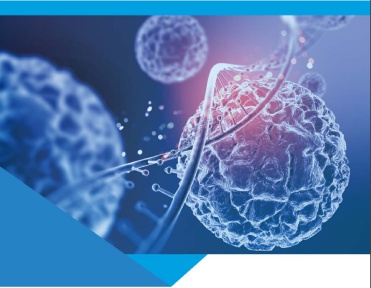
Each year, about 2.5 million people suffer from traumatic brain injuries (TBI), which often increases their risk of developing Alzheimer’s disease later in life.
Researchers led by The Ohio State University Wexner Medical Center and College of Medicine used mouse models and human post-mortem brain tissue to study the molecular underpinnings that may increase the risk of Alzheimer’s after TBI.
“Because of the prevalence of both TBI and Alzheimer’s in humans, understanding the molecular mechanism that underlies the transition from TBI to Alzheimer’s is vital to developing future therapies that reduce this risk,” said study senior author Hongjun “Harry” Fu, Ph.D., assistant professor of neuroscience at Ohio State.
Study findings are published online in the journal Acta Neuropathologica.
Researchers found that TBI increases hyperphosphorylated tau, astro- and microgliosis, synaptic dysfunction and cognitive impairments linked to developing Alzheimer’s disease.
Furthermore, they found that downregulation of BAG3, a protein involved in protein clearance through the autophagy-lysosome pathway, contributes to the accumulation of hyperphosphorylated tau in neurons and oligodendrocytes after TBI in the mouse models and human post-mortem brain tissue with the history of TBI.
Using an AAV-based approach of overexpressing BAG3 in neurons, they found that BAG3 overexpression ameliorates tau hyperphosphorylation, synaptic dysfunction, and cognitive deficits, likely through the enhancement of the autophagy-lysosome pathway.
“Based on our findings, we believe that targeting neuronal BAG3 may be a therapeutic strategy for preventing or reducing Alzheimer’s disease-like pathology,” said study first author Nicholas Sweeney, an Ohio State neuroscience research assistant.
This work builds on their earlier research that had identified BAG3 as a hub gene controlling tau homeostasis from non-diseased human post-mortem tissue. Hence, BAG3 may be a contributing factor to the cellular and regional vulnerability to tau pathology in AD, said co-first author Tae Yeon Kim, a Ph.D. student of Ohio State’s Biomedical Sciences Graduate Program.
“Since previous research using human tissue and mouse models shows that tau pathology increases after TBI, we wondered if BAG3 may be a contributing factor to tau accumulation after TBI,” Fu said. “Indeed, we found that BAG3 dysfunction contributes to disruption of protein clearance mechanisms that results in tau accumulation in mouse models and in human post-mortem tissue with TBI and Alzheimer’s.”
Future research will try to validate the relationship between TBI, BAG3, tau pathology, gliosis and neurodegeneration using a new model of TBI. Known as the Closed Head Induced Model of Engineered Rotational Acceleration (CHIMERA), this model mimics most common mild TBI conditions in humans, Fu said.
“Completion of future studies will allow us to further understand how TBI and Alzheimer’s are biologically linked and develop novel therapies that can reduce the risk of developing Alzheimer’s after TBI,” Fu said.
The research team included scientists from Ohio State, Arizona, New York, West Virginia and Japan.

Check out our AAV CDMO service to expedite your gene therapy research
PackGene Biotech is a world-leading CRO and CDMO, excelling in AAV vectors, mRNA, plasmid DNA, and lentiviral vector solutions. Our comprehensive offerings span from vector design and construction to AAV, lentivirus, and mRNA services. With a sharp focus on early-stage drug discovery, preclinical development, and cell and gene therapy trials, we deliver cost-effective, dependable, and scalable production solutions. Leveraging our groundbreaking π-alpha 293 AAV high-yield platform, we amplify AAV production by up to 10-fold, yielding up to 1e+17vg per batch to meet diverse commercial and clinical project needs. Moreover, our tailored mRNA and LNP products and services cater to every stage of drug and vaccine development, from research to GMP production, providing a seamless, end-to-end solution.
Related News
[2024/12/20] Gene and Cell Therapy- weekly digest from PackGene
FeaturedNewsArticlesPackGene's NewsletterReceive the latest news and insights to your inbox.About PackGenePackGene Biotech is a world-leading CRO and CDMO, excelling in AAV vectors, mRNA, plasmid DNA, and lentiviral vector solutions. Our comprehensive offerings span...
Sangamo and Astellas Collaborate to Advance Neurological Gene Therapies Using AAV Capsid Technology
Sangamo Therapeutics, Inc. (Nasdaq: SGMO), a leader in genomic medicine, and Astellas Pharma Inc. (TSE: 4503), a global innovator in life sciences, have partnered under a new license agreement. This collaboration centers around Sangamo’s cutting-edge neurotropic AAV...
Inceptor Bio and GRIT Bio Announce Strategic Partnership to Advance IB-T101, a Next-Generation Solid Tumor CAR-T Utilizing the OUTLAST™ Platform
SHANGHAI and MORRISVILLE, N.C., Dec. 18, 2024 /PRNewswire/ -- Inceptor Bio, a leading innovator in cell therapy, and GRIT Bio, a clinical-stage immunotherapy developer, today announced a strategic partnership to advance IB-T101, a potentially best-in-class CAR-T...
Proof-of-concept study bioengineers therapeutics for improved cancer treatment
Credit: Pixabay/CC0 Public DomainA team of Children's Medical Research Institute (CMRI) scientists has identified a new method for producing a therapeutic product that has the potential to improve the treatment of cancer. The work by Associate Professor Leszek...
Related Services

AAV Packaging Services
READ MORE

Off-the-Shelf AAV Products
READ MORE

